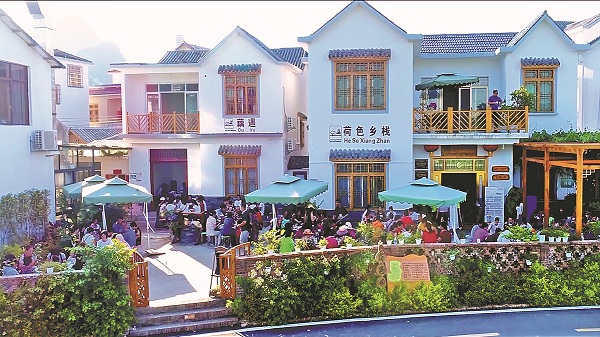Rural vitalization programs provide growth, better lives

Tourists eat at an agritainment business at Dazhao village, Zhongdu. CHINA DAILY
Better lifestyles
Improving the rural living environment is a key task of the overall rural vitalization campaign.
In Zhongdu's Yingshan community, asphalt roads were built to connect villages, while waste and sewage treatment stations were set up, and villagers' kitchens and toilets were renovated.
"The community is clean now, and the new asphalt roads make it really convenient for us to go outside. Before, there was a lot of garbage on the dirt road," said Wang Gangcai, a Yingshan resident.
"The government gave each of us a subsidy of 800 to 1,000 yuan for kitchen upgrades and 1,200 yuan for toilet renovations."
Wang's food preparation area was once a dirt slab and he used firewood for cooking. Now, he uses liquefied gas and has a set of kitchen cabinets.
Thanks to the tourist influx, he makes several hundred extra yuan every month by selling agricultural products.
Last year, Guangxi achieved its targets for improving the living environment in rural areas: 160 million yuan was allocated to support sewage treatment and toilet renovation projects, while 723 sewage treatment stations were set up, leading to a treatment rate of 17.1 percent.
Moreover, work on 102 waste treatment facility projects was completed, and construction started on 370 domestic waste treatment facilities. Also, 5,502 dilapidated houses were renovated and tile-roofed houses were rebuilt in eight counties along the region's borders.
Transportation was further improved as 7,484 kilometers of village roads were paved or rebuilt, and asphalt roads were built in 3,948 villages. Meanwhile, 60 unsafe road bridges were renovated.
A 4G network now covers every administrative village — the smallest rural self-governing organizational unit — key agricultural industrial bases and 99 percent of regular villages, while 90 percent of them have access to fiber-optic networks.














